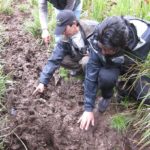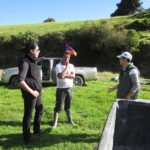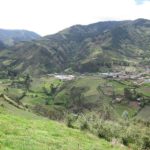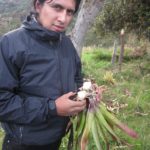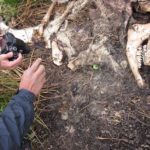On November 12, 2009, in the remote northern highlands of Ecuador not far south of Colombia, a pair of grazing bulls lost their footing on a steep, muddy slope. They slipped down the sheer face of a deep Andean ravine and landed dead in the small stream gully below.
Some days later, a large spectacled bear picked up the smell of ripe flesh. The animal, a male, followed the scent trail down from its high cloud forest habitat and spent several days feasting on the carcasses—treasure troves of protein and fat for an animal that lives mostly on vegetables, fruits and tubers. The event, seemingly just another day in the high Andes, where bears and cattle have crossed paths for centuries, would spiral into one of the most problematic sagas now affecting relations between local indigenous communities and the endangered spectacled bear.
“That was the first time he ate beef,” says Andres Laguna, a Quito-based biologist with the Andean Bear Foundation who has been studying and resolving matters of bear-human conflict for several years. “Then, a few weeks later, he killed his first cow.”
The male bear, Laguna says, quickly gained an irresistible taste for flesh and embarked on what has become an unstoppable and possibly unprecedented rampage of killings. The animal, which Laguna has nicknamed “Yachak”—the indigenous Quechua word for “wise man”—has now killed about 250 head of livestock in the northern provinces of Carchi and Imambura since his first taste of domesticated flesh. Months at a time do go by when the bear vanishes, but other times Yachak kills wantonly. In one week in 2012, for instance, he killed seven head of cattle.
Give the gift of Smithsonian magazine for only $12! http://bit.ly/1cGUiGv
Follow us: @SmithsonianMag on Twitter




